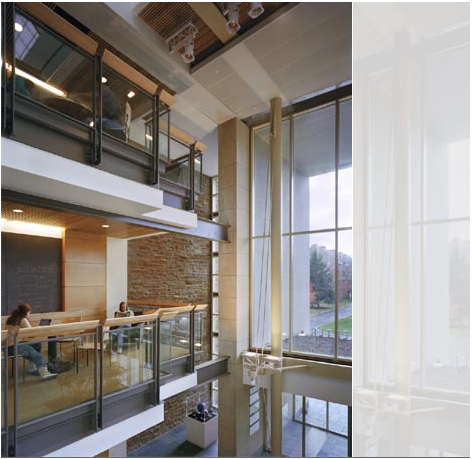Summer Research
* Student(s): Krista Marran , Sarah McNeil , Ashley Kuenzi
Advisor: William Pfitsch
Title: How does canopy cover affect lupine? A case study of the Rome Sand Plains and the Traxell property
Abstract:
At Hogsback Road (2002) in the Rome Sand Plains photographs were taken of the canopy, over each cardinal direction, in 18 plots established around a central pine tree. On the Traxell property (2003) canopy photographs were taken, over each cardinal direction, in 15 locations in a young forest. Plots located at both sites were chosen because lupine was naturally occurring in the understory. The goal of our study was to quantify the effects of tree canopy cover on lupine abundance. The relationship between these two factors is important because high light availability is essential for lupine growth, a plant which hosts a number of butterfly species, including the endangered Frosted Elfin. We hope to use this information to construct an experimental design for expanding the existing lupine populations.
Using data calculated by the Gap-Light Analyzer program, we were able to determine the correlation between lupine flower abundance and three variables associated with light availability; canopy openness, diffuse light transmittance, and direct light transmittance. We found a positive relationship between number of lupine flowers and the three light variables at both Hogsback and Traxell. All correlations were weak and inconsistent but we can conclude that an increase in light results in more lupine. The strongest relationship observed was between direct transmittance and number of lupine flowers (R^2=0.145, p-value=0.001). This suggests that in order to expand lupine, we must alter the canopy structure in such a way where we can manipulate the amount of direct transmittance reaching the forest floor. Removing trees on the southern side of the experimental plots could be one possibility.
Conservationists at the Albany Pine Bush have been attempting to expand lupine for a number of years, involving a project similar to ours. They have determined that 30% tree canopy cover is optimal. Our data remains concentrated in the lower spectrum of light availability (>70% canopy cover); far below what we expect to be optimal. In the future, we hope to see an increase of lupine along with the removal of trees.
Student stipend support for KM provided by the Ralph E. Hansmann Science Student Support Fund; support for AK provided by the Dean's Summer Research Fund; support for SM provided by the Sergei S. Zlinkoff Fund for Medical Education.


